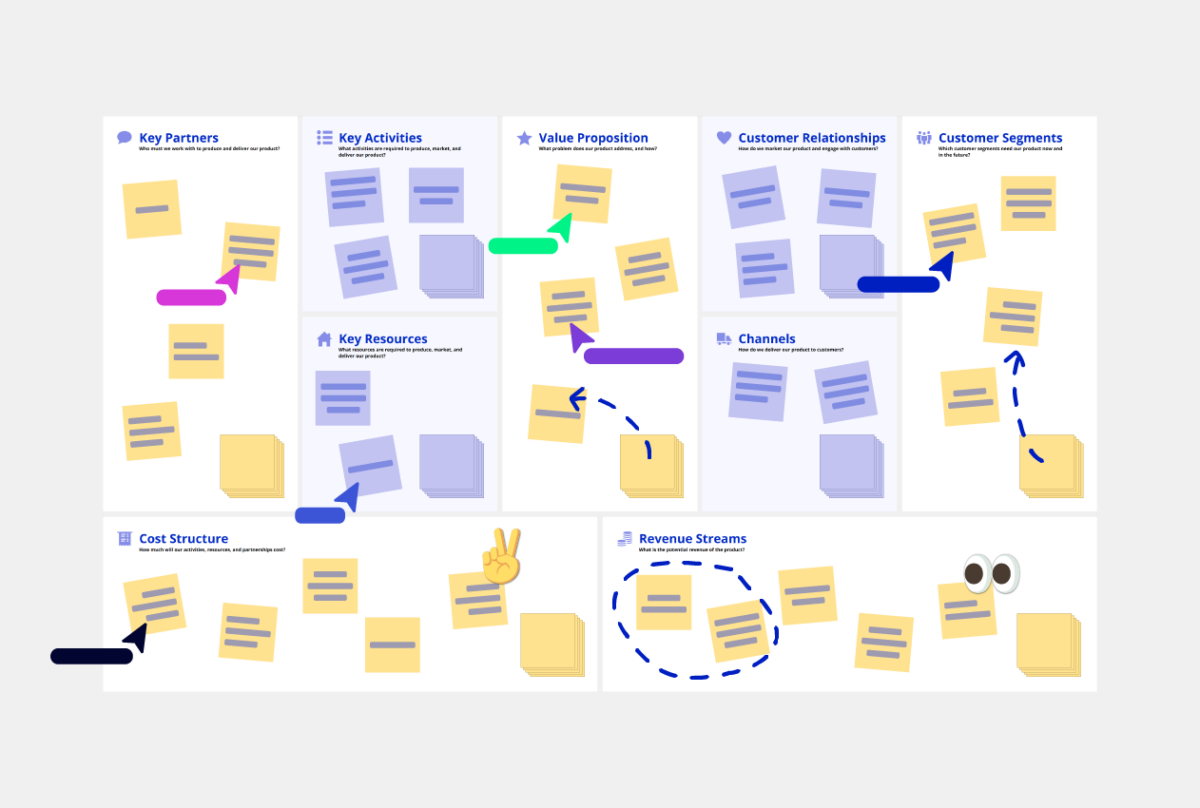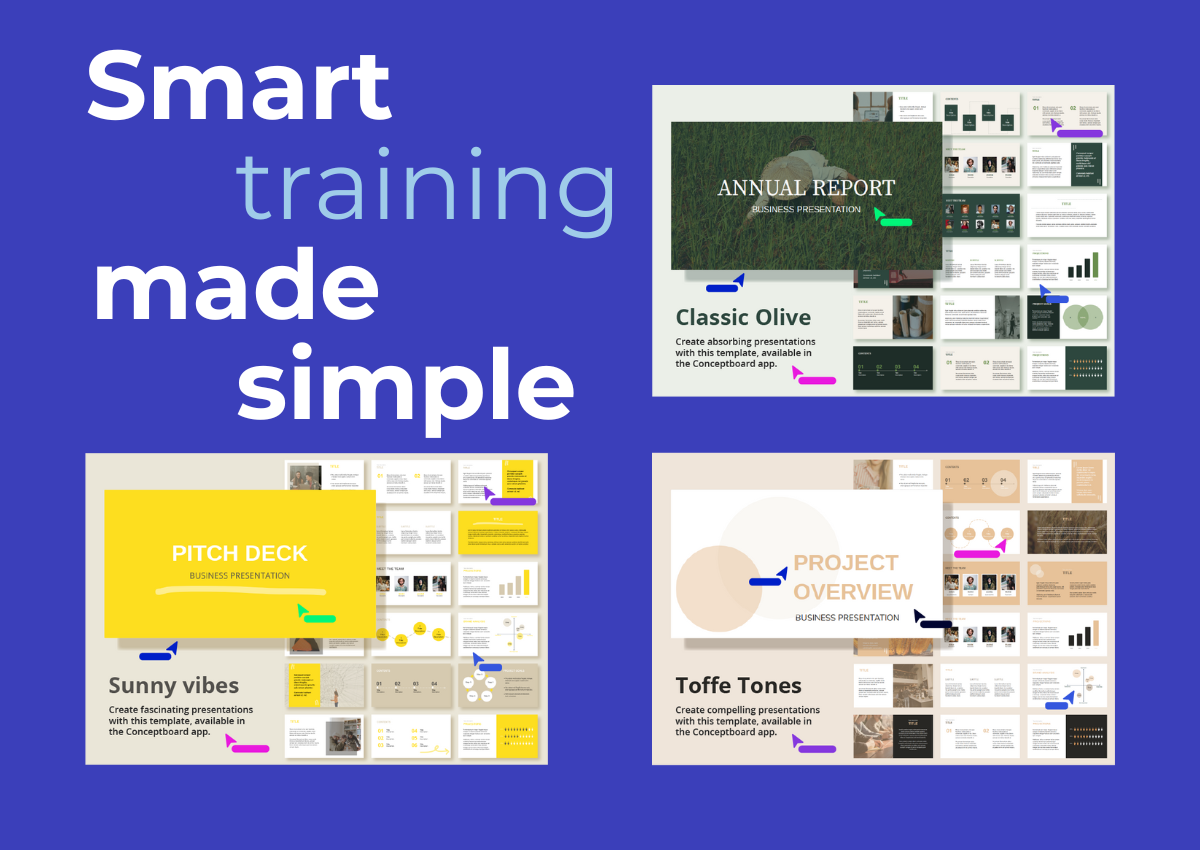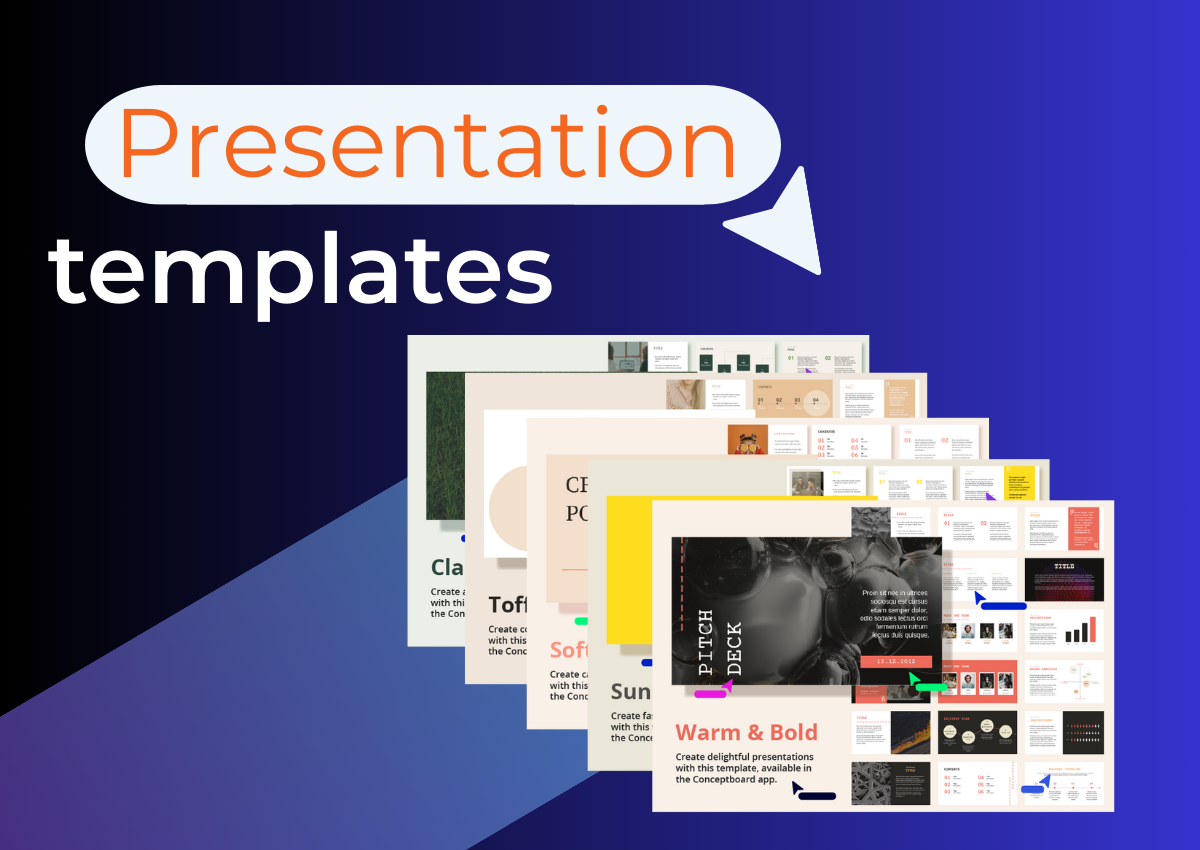This post is also available in: German
The Business Model Canvas is a strategic tool used to quickly and easily define a new business idea or concept. It was created in 2008 by Alexander Osterwalder to help clearly understand how a business creates, delivers and captures value. The one-page document explains fundamentals such as who are the customers, what value are they receiving, and how will that generate income.
The visual model is divided into nine core points, the customer factors (external forces) are on the right-hand side, and the business factors (internal forces) are on the left. In the middle, sits the value proposition,which explains what value will be exchanged between the customer and the business.
By visualizing a business through these nine key areas, it makes it easier to be read and understood by anyone.
Using a business model canvas makes it much easier to understand the key elements of a business compared to a traditional business plan, as you don’t need to get bogged down in unnecessary details. At the early stage, it’s more important to test assumptions and identify potential issues quickly.
What are the 9 sections of a business model canvas?
The nine parts of a business model canvas template cover the key building blocks of any business: key partners, key activities, value proposition, customer relationships, customer segments, key resources, distribution channels, cost structure and revenue streams.

These are the key questions you should try to answer in each section:
- Key partners: Who are our key partners or suppliers? Who do I need to partner with to deliver my business?
- Key activities: What will our business do or sell? What main activities do we need to do to ensure our business model works?
- Value proposition: What core value do we deliver to our customers? What is the problem we are solving? Why would someone want to have this problem solved?
- Customer relationships: What relationship will we establish with our customers at each stage of the journey? Consider face-to-face, through third-party contractors, online, at events, over the phone. A Customer Journey Map can help you identify all these touchpoints.
- Customer segments: Who are the people that will need my solution? Who are we solving a problem for? You could start by completing a User Persona template to get a better understanding of your core customer demographics.
- Key resources: What key resources do we need to carry out our key activities: consider human, financial, intellectual, physical resources.
- Distribution channels: Which channels will we use to reach our customers? Where do they get their information from? Consider owned (your website, in-house sales, social media accounts) and partner (retail, wholesale, PR)
- Cost structure: What are the monetary costs in operating this business? How are they linked to revenue?
- Revenue stream: What are our customers willing to pay for this value we are creating? Consider revenue streams such as asset sales, usage fees, freemium, subscription fees, leasing, licensing, advertising, affiliate.
Create your business model canvas online
A business model canvas template allows you to easily create, iterate and update as your idea changes over time. This makes it a much more agile and adaptable model, in-sync with the realities of a new business, compared to a lengthy business plan.
Conceptboard’s online template enables real-time collaboration with team members, regardless of where you are in the world. Simply invite your co-founders, colleagues, or team members to join the online whiteboard, and you can all add ideas as sticky notes to the digital template.
In each section, brainstorm ideas based on your own assumptions and add relevant research or facts that you’ve collected. This data will help add weight to your assumptions.
Once the model is completed, you can easily share with stakeholders or download it as a PDF. Best of all, it’s saved in your Conceptboard account, so you can return to the model and update it at any time.
Additional business strategy templates
Conceptboard helps you map out complex information in a visual way, making it easier to understand and see connections. Best of all, our remote-first whiteboard enables distributed teams to collaborate with ease.
Check out our comprehensive template library where you can try all our popular business frameworks for free such as the Customer Empathy Map, the Value Proposition Canvas, SWOT Analysis template, the Lean Canvas and the Ansoff Matrix for identifying market expansion opportunities.




